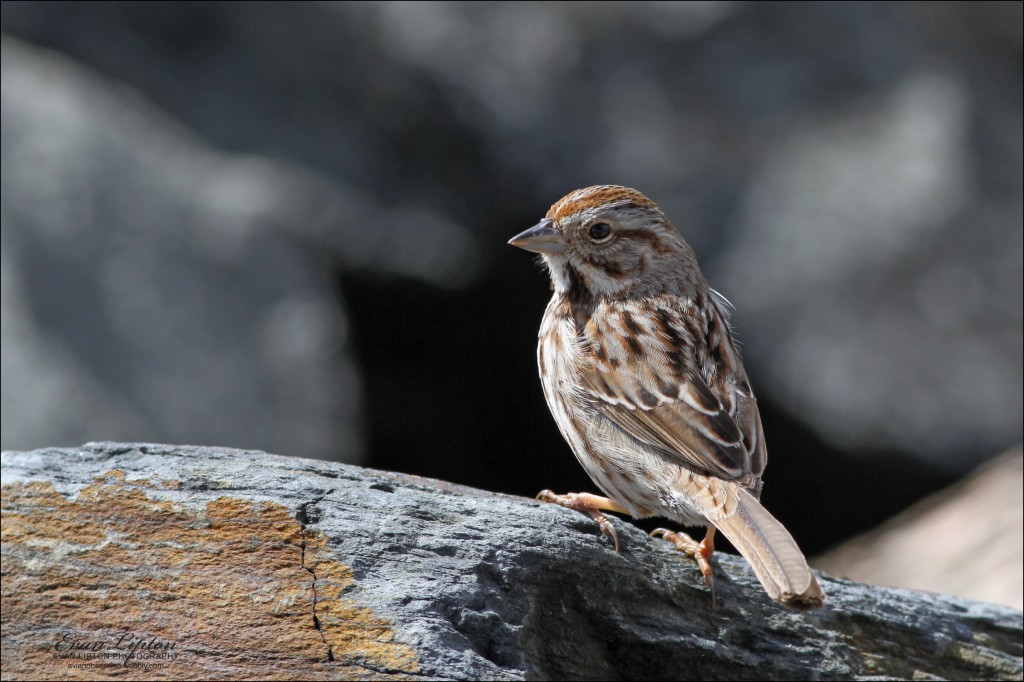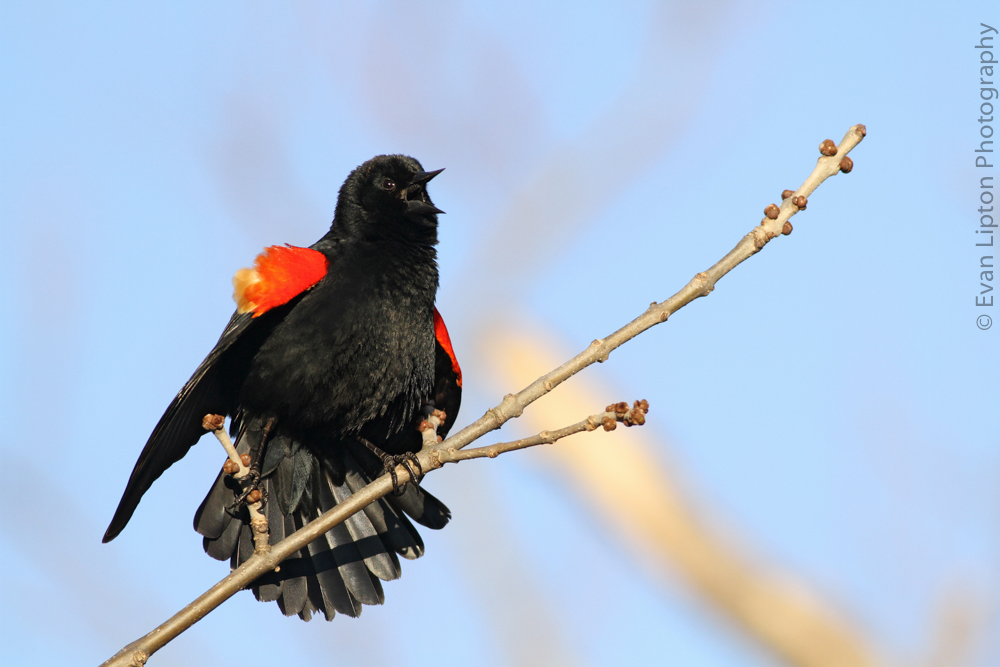An account of the decline of the Great Auk, according to one who saw it.
By Jessie Greengrass. London: JM Originals, 2015. HOLLIS# 014576531
PR6107.R44433 A6 2015
The alewives’ tale: the life history and ecology of river herring in the Northeast.
By Barbara Brennessel. Amherst: University of Massachusetts Press, [2014]. HOLLIS# 014597364
QL638.C64 B74 2014
The amphibians and reptiles of Oman and the UAE.
By Andrew S. Gardner. Frankfurt am Main: Edition Chimaira, 2013. HOLLIS# 014579980
QL661.O5 G37 2013
Animal electricity: how we learned that the body and brain are electric machines.
By Robert B. Campenot. Cambridge, Massachusetts: Harvard University Press, 2016. HOLLIS# 014381606
QP341.C36 2016
Animal movement across scales.
Edited by Lars-Anders Hansson and Susanne Åkesson. First edition. Oxford: Oxford University Press, 2014. HOLLIS# 014564276
QL754.A555 2014
Application of genetic engineering to research on tropical disease pathogens with special reference to plasmodia: a laboratory manual of selected techniques.
Editors, S. Panyim, P. Wilairat, Y. Yuthavong. Geneva: Director of Special Programme, TDR, World Health Organization, [1985]. HOLLIS# 014598311
QR201.T57 A4 1985
Arboviral encephalitides in Ontario with special reference to St. Louis encephalitis.
Edited by M.S. Mahdy, L. Spence, J.M. Joshua. [Toronto]: [Ontario Ministry of Health], 1979. HOLLIS# 014598355
RC141.E6 A72 1979
Atlas of early zebrafish brain development: a tool for molecular neurogenetics. [E-book]
By Thomas Mueller, Mario F. Wullimann. Second edition. London: Academic Press, [2016]. HOLLIS# 014602932
The bee: a natural history.
By Dr. Noah Wilson-Rich, with Kelly Allin, Norman Carreck & Dr. Andrea Quigley. Princeton, New Jersey: Princeton University Press, 2014. HOLLIS# 014579151
QL568.A6 W557 2014
A biodiversity assessment of Yongsu–Cyclops Mountains and the southern Mamberamo Basin, Papua, Indonesia.
Editors, Stephen J. Richards and Suer Suryadi. Washington, DC: Conservation International, Center for Applied Biodiversity Science, Dept. of Conservation Biology, ©2002. HOLLIS# 014613598
QH186.5.B57 2002x
Biodiversity of the Southern Ocean. [E-book]
By Bruno David, Thomas Saucède. London: ISTE Press; Oxford: Elsevier, 2015.HOLLIS# 014602933
Bioinformatics and functional genomics. [E-book]
By Jonathan Pevsner. Third edition. Chichester, West Sussex, UK; Hoboken, NJ, USA: Wiley Blackwell, 2015. HOLLIS# 014598347
Biology and culture of percid fishes: principles and practices [E-book]
By Patrick Kestemont, Konrad Dabrowski, Robert C. Summerfelt. Dordrecht: Springer, 2015. HOLLIS# 014602328
Biology and ecology of sardines and anchovies.
Editor, Konstantinos Ganias, School of Biology, Aristotle University of Thessaloniki, Greece. Boca Raton: CRC Press, Taylor & Francis Group, [2014]. HOLLIS# 014564272
QL638.C64 B455 2014
Bird families of the world: an invitation to the spectacular diversity of birds.
By David W. Winkler, Shawn M. Billerman, Irby J. Lovette. Barcelona: Lynx Edicions, [2015]. HOLLIS# 014561578
QL672.5.W56 2015x
The birds of the Iberian Peninsula.
By Eduardo de Juana and Ernest Garcia. London: Christopher Helm, 2015. HOLLIS# 014579152
QL690.S7 J83 2015
Bonobo cognition and behavior. [E-book]
Edited by Brian Hare and Shinya Yamamoto. Leiden: Brill, 2015. HOLLIS# 014602943
Catalogus fossilium Austriae: ein systematisches Verzeichnis aller auf österreichischem Gebiet festgestellten Fossilien. Band 4, Rodentia neogenica.
Schriftleitung, Werner E. Piller. Wien: Verlag der Österreichen Akademie der Wissenschaften, 2001- . HOLLIS# 013883856
QE755.A8C3 2001 Bd. 4
Chemical signals in vertebrates 13.
Bruce A. Schulte, Thomas E. Goodwin, Michael H. Ferkin, editors. Cham, Switzerland; New York: Springer, [2016]. HOLLIS# 014609676
QL776.I48 2014
The choanoflagellates: evolution, biology, and ecology.
By Barry S.C. Leadbeater, University of Birmingham, UK. Cambridge, United Kingdom: Cambridge University Press, 2015. HOLLIS# 014610262
QL368.C5 L43 2015
Coevolution of life on hosts: integrating ecology and history. [E-book]
By Dale H. Clayton, Sarah E. Bush, and Kevin P. Johnson. Chicago; London: The University of Chicago Press, 2016. HOLLIS# 014602934
Contemporary ecology research in China. [E-book]
Wenhua Li, editor-in-chief. Berlin: Springer, [2015]. HOLLIS# 014602334
Cooperative breeding in vertebrates: studies of ecology, evolution, and behavior. [E-book]
Edited by Walter D. Koenig, Janis L. Dickinson, Lab of Ornithology, Cornell University; with illustrations by Stef den Ridder. Cambridge: Cambridge University Press, [2016]. HOLLIS# 014602935
Cuba: Camagüey, Sierra de Cubitas.
Luis M. Díaz, William S. Alverson, Adelaida Barreto Valdés y and Tatzyana Wachter, editors. Chicago, Illinois: Field Museum, Environmental and Conservation Programs, 2006. HOLLIS# 014602320
QH109.C9 C82 2006
Cuba: Pico Mogote.
David Maceira F., Ansel Fong G., y/and William S. Alverson, Editors. Chicago, Ill.: Field Museum, Environmental and Conservation Programs, ©2006. HOLLIS# 014613665
QH109.C9 C83 2006x
Dengue hemorrhagic fever, 1981: proceedings of the First ICMR Seminar, November 21-22, 1980, Kobe, Japan.
Kobe, Japan: International Center for Medical Research, Kobe University School of Medicine, [1981?]. HOLLIS# 014598303
RC137.I36 1980
The early Cambrian tommotiid genus Dailyatia from South Australia.
By Christian B. Skovsted, Marissa J. Betts, Timothy P. Topper & Glenn A. Brock. Canberra: Association of Australasian Palaeontologists, 2015. HOLLIS# 014610242
QE726.S56 2015x
Echinodermata.
Edited by Andreas Schmidt-Rhaesa. Berlin; Boston: De Gruyter, [2015]- . HOLLIS# 014595942
QL384.E2 S38 2015
Ecological parasitology: reflections on 50 years of research in aquatic ecosystems. [E-book]
By Gerald W. Esch. Chichester, West Sussex UK; Hoboken, NJ: John Wiley & Sons, Ltd, 2016. HOLLIS# 014602936
The eponym dictionary of birds.
By Bo Beolens, Michael Watkins and Michael Grayson. London; New York: Bloomsbury Publishing Plc, 2014. HOLLIS# 014579156
REF QL672.2.B46 2014
Die Eulenfalter der Schweiz: Lepidoptera, Noctuidae, Pantheidae, Nolidae.
[By] Hans-Peter Wymann, Ladislaus Rezbanyai-Reser, Max Hächler; unter Mitarbeit von Anne Luginbühl. Neuchâtel: Info fauna–Centre suisse de cartographie de la faune: Schweizerische Entomologische Gesellschaft, 2015. HOLLIS# 014610230
QL561.N7 W96 2015
Evolution by natural selection: confidence, evidence and the gap. [E-book]
By Michaelis Michael. Boca Raton, FL: CRC Press, [2016]. HOLLIS# 014602937
Evolution: making sense of life. [On reserve]
By Carl Zimmer, Douglas J. Emlen. Second edition.Greenwood Village, Colorado: Roberts and Company Publishers, 2015. HOLLIS# 014569539
QH366.2.Z526 2015
Fishes: an introduction to ichthyology. [On reserve]
By Peter B. Moyle, Joseph J. Cech, Jr. Fifth edition. Upper Saddle River, NJ: Pearson Prentice Hall, [2004]. HOLLIS# 014577330
QL615.M64 2004
Forensic entomology: international dimensions and frontiers.
By Jeffery Keith Tomberlin (Department of Entomology, Texas A & M University), M. Eric Benbow (Department of Entomology and Department of Osteopathic Medical Specialties, Michigan State University). Boca Raton: CRC Press, [2015]. HOLLIS# 014564273
RA1063.45.F665 2015
Guidelines for arbovirus surveillance programs in the United States.
By C.G. Moore [and others]. Fort Collins, Co.: U.S. Dept. of Health and Human Services, Public Health Service, Centers for Disease Control and Prevention, National Center for Infectious Diseases, Division of Vector-Borne Infectious Diseases,1993. HOLLIS# 014598360
QR201.A72 M66 1993x
Handbook of larval amphibians of the United States and Canada.
By Ronald Altig, Roy W. McDiarmid; foreword by Aaron M. Bauer. Ithaca; London: Comstock Publishing Associates, a division of Cornell University Press, 2015. HOLLIS# 014564274
QL641.A45 2015
Indicators and surrogates of biodiversity and environmental change. [E-book]
Editors, David Lindenmayer, Philip Barton and Jennifer Pierson. Clayton, Vic.: CSIRO Publishing, 2015. HOLLIS# 014602938
Lyme borreliosis 1990: proceedings of the IV International Conference on Lyme Borreliosis, held in Stockholm, Sweden, June 18-21, 1990.
Guest editors, Birgit Sköldenberg, Göran Stiernstedt. Stockholm, Sweden: Almqvist & Wiksell International, [1991]. HOLLIS# 014598334
RA644.L94 I56 1990x
Malaria and development in Africa: a cross-sectoral approach.
American Association for the Advancement of Science, Sub-Saharan Africa Program. Washington, D.C.: The Association, [1991]. HOLLIS# 014598342
RA644.M2M215 1991
Malaria: meeting the global challenge.
[Alexanderina V. Shuler]. [Washington, D.C.]: Agency for International Development, U.S.A.; Boston: Oelgeschlager, Gunn & Hain,[1985 or 1986]. HOLLIS# 014598320
RA644.M2 S48 1985
Marine ecosystems: diversity and functions. [E-book]
Edited by André Monaco, Patrick Prouzet. London: ISTE, 2015. HOLLIS# 014602939
Metamorphosis: astonishing insect transformations.
Written and photographed by Rupert Soskin; foreword by Dr. George McGavin. London; New York: Bloomsbury Natural History, an imprint of Bloomsbury Publishing Plc, 2015. HOLLIS# 014610267
QL494.5.S67 2015
Microbial life of cave systems. [E-book]
Edited by Annette Summers Engel. Berlin; Boston: Walter de Gruyter GmbH & Co., KG, [2015]. HOLLIS# 014602940
Monarchs in a changing world: biology and conservation of an iconic butterfly.
Edited by Karen S. Oberhauser, Kelly R. Nail, Sonia Altizer. Ithaca; London: Comstock Publishing Associates, a division of Cornell University Press, 2015. HOLLIS# 014597366
QL561.D3 M6635 2015
Naturally curious: a photographic field guide and month-by-month journey through the fields, woods, and marshes of New England.
By Mary Holland. North Pomfret, Vt.: Trafalgar Square Books, c2010. HOLLIS# 012712988
QH104.5.N4 H65 2010
Omsk hemorrhagic fever: ecology of the agent and epizootiology.
N.N. Kharitonova and Yu. A. Leonov. New Delhi: Published for the National Library of Medicine by Amerind, 1985. HOLLIS# 014598328
RC147.H44 K45 1985
Parrots of the wild: a natural history of the world’s most captivating birds.
By Catherine A. Toft and Timothy F. Wright; foreword by James D. Gilardi. First edition. Oakland, California: University of California Press; [Lake Alfred, FL]: In collaboration with the World Parrot Trust, [2015]. HOLLIS# 014597367
QL696.P7 T64 2015
Patterns in nature: the analysis of species co-occurrences. [E-book]
By James G. Sanderson, Stuart L. Pimm. Chicago: The University of Chicago Press, 2015. HOLLIS# 014602941
Problematic wildlife: a cross-disciplinary approach. [E-book]
Francesco M. Angelici, editor. Cham: Springer, c2016. HOLLIS# 014602942
Quantitative viral ecology: dynamics of viruses and their microbial hosts.
By Joshua S. Weitz. Princeton; Oxford: Princeton University Press, [2015]. HOLLIS# 014609692
QR478.A1 W45 2015
A rapid biological assessment of the Konashen community owned conservation area, southern Guyana.
By Leeanne E. Alonso [and others]. Arlington, Virginia: Conservation International, Center for Applied Biodiversity Science, 2008. HOLLIS# 014613651
QH125.4.R37 2008
Rapid biological assessments of the Nakanai Mountains and the upper Strickland Basin: surveying the biodiversity of Papua New Guinea’s sublime karst environments.
Editors, Stephen J. Richards and Banak G. Gamui. Arlington, VA: Conservation International, ©2011. HOLLIS# 014613637
QH186.5.R375 2011
Research on arthropod-borne viruses with special reference to dengue and related tropical viruses.
By Susumo Hotta. Kobe: Yukosha Printing House, 1978. HOLLIS# 002496064
RA644.D4 H68 1978x
The Robertson and Woolfenden Florida bird species: an annotated list.
By Jon S. Greenlaw, Bill Pranty, Reed Bowman; Jerome A. Jackson, editor. Second edition. Gainesville, Florida: Florida Ornithological Society, 2014. HOLLIS# 014601641
QL684.F6 R63 2014
The seasonal incidence of ixodid ticks of cattle in northern Nigeria and in the Netherlands, with particular reference to their role in the transmission of bovine piroplasms.
By Adamu Nayaya Mohammed. 1974. HOLLIS# 014600074
SF967.B17 M64 1974x
60 Cypriot spiders: an introduction to the spiders of Cyprus and their relatives.
By Duncan McCowan. Limassol, Cyrus: Mikrokyklos Books, [2014]. HOLLIS# 014494058
QL453.4.C9 M33 2014x
Snakes & snakebite in southern Africa.
By Johan Marais. Snakes and snakebite in southern Africa Second edition. Capetown: Struik, 2014. HOLLIS# 014579155
QL666.O6 M2556 2014
The toxicology and biochemistry of insecticides.
By Simon J. Yu. Second edition. Boca Raton: Taylor & Francis, [2015]. HOLLIS# 014564275
SB951.5.Y8 2015
Venomous reptiles and their toxins: evolution, pathophysiology, and biodiscovery.
By Bryan G. Fry. New York, NY: Oxford University Press, [2015]. HOLLIS# 014597368
QP632.V46 V45 2015
Visual ecology.
By Thomas W. Cronin, Sönke Johnsen, N. Justin Marshall, and Eric J. Warrant. Princeton: Princeton University Press, 2014. HOLLIS# 014564277
QP475.C76 2014
Where have all the animals gone? : my travels with Karl Ammann.
By Dale Peterson; with an afterword by Karl Ammann. Peterborough, New Hampshire: Bauhan Publishing, 2015. HOLLIS# 014610266
QL84.6.A1 P48 2015



